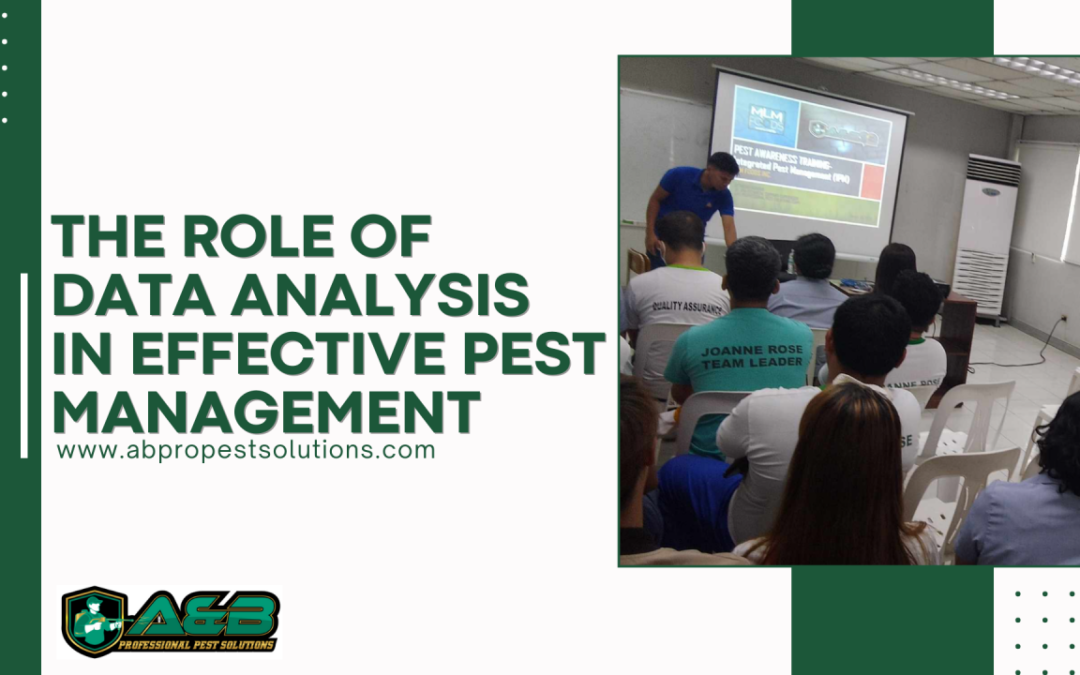Data analysis is a critical component in modern pest management, offering insights and actionable information to enhance the effectiveness and efficiency of pest control strategies. By leveraging data, pest management professionals can make informed decisions, predict pest outbreaks, and implement targeted interventions. This article explores the role of data analysis in effective pest management, its benefits, and practical applications.
Importance of Data Analysis in Pest Management
1. Monitoring and Surveillance:
- Real-Time Tracking: Data analysis allows for real-time tracking of pest populations and activities. By using tools like sensors, traps, and Geographic Information Systems (GIS), pest management professionals can gather and analyze data to monitor pest movements and densities.
- Trend Analysis: Historical data analysis helps identify trends and patterns in pest behavior, enabling prediction of future outbreaks and timely interventions.
2. Risk Assessment:
- Identifying Hotspots: Data analysis helps in identifying high-risk areas where pest infestations are likely to occur. This allows for focused and efficient allocation of resources.
- – Predictive Modeling: Using predictive models, data analysis can forecast pest outbreaks based on environmental conditions, seasonal variations, and historical trends. This proactive approach minimizes pest impact.
3. Decision-Making:
- Evidence-Based Strategies: Data-driven insights enable pest management professionals to design and implement evidence-based strategies, ensuring that control measures are both effective and efficient.
- Cost Optimization: By analyzing cost data related to different pest control measures, businesses can identify the most cost-effective strategies, optimizing their pest management budgets.
Benefits of Data Analysis in Pest Management
1. Enhanced Effectiveness:
- Targeted Interventions: Data analysis helps in pinpointing the exact locations and times for pest control interventions, increasing their effectiveness and reducing the likelihood of pest resurgence.
- Adaptive Management: Continuous data collection and analysis allow for adaptive management, where strategies can be adjusted based on real-time feedback and changing conditions.
2. Improved Sustainability:
- Reduced Chemical Use: By identifying the precise needs and hotspots for pest control, data analysis reduces the indiscriminate use of chemicals, promoting more sustainable and environmentally friendly practices.
- Conservation of Beneficial Species: Targeted pest control minimizes the impact on non-target species, preserving beneficial insects and promoting ecological balance.
3. Regulatory Compliance:
- Documentation and Reporting: Detailed data records support compliance with regulatory requirements by providing evidence of pest management activities and their outcomes.
- Risk Management: Data analysis helps in managing risks associated with pest control measures, ensuring that they are safe and compliant with industry standards.
Practical Applications of Data Analysis
1. Integrated Pest Management (IPM):
- Combining Multiple Data Sources: IPM programs benefit from combining data from various sources, including field observations, remote sensing, and climate data, to develop comprehensive pest management plans.
- Customized Solutions: Data analysis allows for the customization of IPM strategies to specific sites and pest issues, improving the overall efficacy of the pest management plan.
2. Precision Agriculture:
- Variable Rate Application: In agriculture, data analysis supports precision farming techniques, such as variable rate application of pesticides, which optimizes the use of inputs based on data-driven insights.
- Yield Prediction: Analyzing pest data in conjunction with crop data helps in predicting yields and identifying potential threats early, ensuring timely and appropriate actions.
3. Urban Pest Management:
- Smart Cities: In urban areas, data analysis integrates with smart city technologies to monitor and control pests in real-time, using sensors and IoT devices to gather and analyze data continuously.
- Public Health: Data analysis aids in managing pests that pose public health risks, such as mosquitoes and rodents, by predicting outbreaks and guiding preventive measures.
Data analysis is indispensable in modern pest management, offering numerous benefits from enhanced effectiveness and sustainability to improved regulatory compliance. By leveraging data-driven insights, pest management professionals can develop targeted, efficient, and adaptive strategies that protect crops, maintain public health, and preserve ecological balance. Embracing data analysis in pest management practices ensures a proactive approach, leading to more resilient and sustainable pest control solutions.
To know more about A&B’s services, please visit the A&B’s website (www.abpestsolutions.com.ph) or Facebook Page (https://www.facebook.com/ABPestSolutions/) to know more about their services. A&B also disinfects workplaces or houses to kill COVID-19 Virus.
You may also contact: +63 905 496 4550 and +63 951 062 4830
A&B Professional Pest Solutions Corporation is located at the Ground Floor of Monterey Building at Genesis St., Centro de San Lorenzo, Santa Rosa, 4026 Laguna, Philippines

